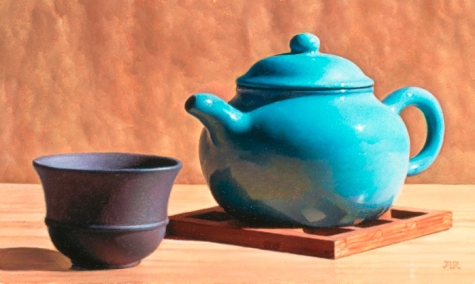Fine Art

In order to paint visual experience, it helps to understand light, form, and the nature of their interaction.
Light is the visible expression of the world around us. Light comes from various sources, it interacts with various forms, and the result of that interaction, the effect of the light, is the raw data of visual experience.
We begin our study of visual experience as infants. As children we gain and store vast amounts of information. Each of us is a walking ‘Library of Congress’ of visual data. All our lives, every day, we continually add to it.
Visual experience is cognitive. It enters into our awareness. We gather visual data with our eyes. The stream of data passes through the space of our conscious awareness on its way to storage in the deeper strata of the mind. We notice just an infinitesimal fraction of all that we see.
Everyone has visual cognition. As artists, however, we need to go further. We need visual re-cognition. It’s not enough to passively cognize. We have to actively recognize. Visual recognition is the examination and conscious understanding of the generally unconscious data of simple visual cognition. This is what we call ‘seeing’.
Of course, ‘simple’ visual cognition is not so simple after all. As we study it we become more and more aware of how deep and complex it really is. Beyond the narrow limits of our understanding, everything (light, form, the mind) is a mystery.
We approach the study of the effect of the light scientifically. Our subject of inquiry is the phenomenon of vision. The art studio is our laboratory. Each drawing and painting is an experiment and a mirror, reflecting our ideas and notions of reality. How do they compare to the model?
The more we study the world of visual appearances, the more our respect for the great painters grows. We realize that painting is not a matter of copying what we see. It is a struggle with unconsciousness, an effort to achieve awareness.
Visit www.theryderstudio.com for more information on art classes.